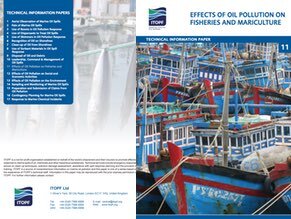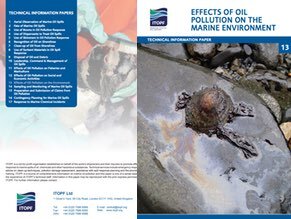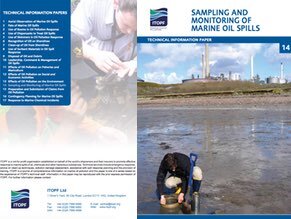Effects in Offshore and Coastal waters
Most oils float on the sea surface where they are spread over a wide area by currents, wind and waves.
Depending on the type of oil, it may disperse into the top few metres of the water column. As a result the potential environmental impacts of oil in open waters are generally confined to this upper area of the water column although, on occasion, some types of oil will sink and environmental impacts may be observed on the seabed. The types of organisms that are commonly impacted in an open sea spill include; plankton, fish, seabirds and marine mammals and reptiles.
Plankton
The upper pelagic zone of seas and oceans support a myriad of planktonic organisms, including bacteria, eggs and larvae, and a variety of animal and plant species. It is well established that plankton is sensitive to oil exposure and consequently short-term impacts should be expected in the immediate vicinity of the oil. However, organisms with planktonic life stages are characteristically present in the plankton in huge numbers and will naturally suffer very high levels of mortality. As a result, a large proportion of a given species will remain unaffected by the spill and it is rare for plankton mortalities following a spill to result in reduced adult populations.
Fish

Although the eggs and larvae of fish may be susceptible to the effects of oil, adult fish tend to be more resilient. Reductions in wild fish stocks in offshore and coastal waters following oil spills have rarely been detected, as it is thought that fish can detect unfavourable water conditions and actively swim away to avoid them. Where mass mortalities have occurred, they have been caused by very high, localised concentrations of dispersed oil in shallow or confined waters. Fish mortalities can occur with cultured fish stocks where individuals are unable to actively avoid the oil.
Seabirds

In open water, seabirds are some of the most vulnerable of all animals, and in some incidents large numbers may perish. Fouling of plumage (which is essential for thermoregulation and buoyancy control) is the most visible effect. Although cleaning and rehabilitation of birds may be attempted, success is often linked to the species of bird, and in many cases only a small fraction of those treated will survive. However, it is encouraging that with experience and research, best practices for bird cleaning are emerging and outcomes are improving. Increasingly, oil contingency plans define policies on how to deal with oiled seabirds and wildlife.
Sea Mammals and Reptiles
Due to the tendency of oil to float at the sea surface, marine mammals and reptiles are at risk as they must surface to breathe. The oil can potentially cause harm to nasal tissues and eyes and whilst mortalities caused by oil have been recorded, the majority of mortalities which coincide with oil spills have usually been found to result from other causes. Mammals that rely on fur to regulate body temperature can be vulnerable to the effects of oil as they may be harmed or die from hypothermia or overheating if their fur becomes matted with oil. For marine reptiles, the greatest impact is probably away from the open sea and on their nesting beaches should they become contaminated with oil.
11 油类污染对渔业和海洋生物养殖的影响
本文将介绍船源性油类污染对渔业和海洋养殖的影响,并就有助于降低油类泄漏影响 之严重性的应对措施和管理策略提供指南。对其它经济资源的破坏在另一篇技术资料 论文中予以讨论。
Categories: Environmental effects, Economic effects, Technical Information Paper (TIPS)
13 油类污染对环境的影响
本文介绍船源性油类泄漏及随后的清理活动对海洋植物群和动物群及其栖息地的影响。 本文特别讨论了油类和生物系统之间复杂的相互作用,多年来的众多研究都以此作为 研究主题。其它 ITOPF 文章对油类对渔业和海洋养殖及更广泛的人类活动的具体影 响进行了讨论。
Categories: Environmental effects, Technical Information Paper (TIPS)
14 海洋油类泄漏的采样和监视
本文广泛地介绍了可用于对油类污染进行定性和定量监视的监视和采样程序。 定性分析可以确认油类污染的来源,而监视计划通常关注的是碳氢物水平长期 的数量变化。本文将就最佳分析做法提供指导,并介绍常用术语。不过,监视 特定生态或生物影响及监视空气中污染物所需的技术和观察工作不在本文的讨 论范围之列。
Categories: Environmental effects, Planning & operations, Technical Information Paper (TIPS)



